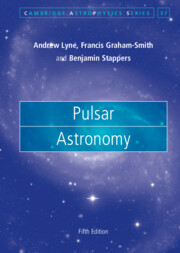Book contents
- Frontmatter
- Contents
- Preface
- Part I Discoveries and Techniques
- Part II Observed Physical Characteristics
- 8 Pulse Profiles
- 9 The Variability of Pulsar Emission
- 10 Millisecond Pulsars
- 11 Magnetars
- 12 Thermal X-rays from Neutron Stars
- Part III Neutron Star Physics
- Part IV Environments and the Interstellar Medium
- References
- Index
12 - Thermal X-rays from Neutron Stars
from Part II - Observed Physical Characteristics
Published online by Cambridge University Press: 21 July 2022
- Frontmatter
- Contents
- Preface
- Part I Discoveries and Techniques
- Part II Observed Physical Characteristics
- 8 Pulse Profiles
- 9 The Variability of Pulsar Emission
- 10 Millisecond Pulsars
- 11 Magnetars
- 12 Thermal X-rays from Neutron Stars
- Part III Neutron Star Physics
- Part IV Environments and the Interstellar Medium
- References
- Index
Summary
Thermal x-rays from neutron stars are mainly radiated by accretion discs originating in the flux of material from a companion star. The companions are white dwarf stars with a range of masses, and some black holes. X-ray bursts are attributed to catastrophic nuclear events on the neutron star surface following accretion from the companion. Structure in the rotating accretion disc is observed as quasi-periodic oscillations (QPOs).
Keywords
- Type
- Chapter
- Information
- Pulsar Astronomy , pp. 192 - 210Publisher: Cambridge University PressPrint publication year: 2022

